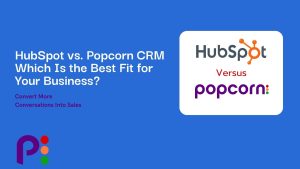A loyalty programme is a fantastic way to keep your customers interested, engaged, and responsive. Plus, the financial rewards—increased and consistent customer retention—are a huge benefit to your sales and marketing budget. However, loyalty programmes aren’t one-size-fits-all, and in order for them to work for your business, they have to suit your type of business.
Loyalty programmes fall into 7 generic categories of programme. These determine the interaction between you and your customer, and what the customer gets for their contribution.

Types of Loyalty Programme
Points-Based Loyalty Programme
In a points-based system, customers accrue points each time they purchase your products or services. This can be adjusted to only count for certain products/services, or the number of points can vary depending on what they buy. When they reach a threshold you set, they get a reward. They don’t have to be money—quite often they are upgrades or discounts, or a free gift, which they can spend their points on as credit.
Spending
Similar to the points-based system, spending programmes rely on a customer spending on your products/services. After they pass a threshold on how much they’ve spent with you, they can get cash back, a discount, or a free product/service. What differentiates a spending programme from a points-based programme is that it deals solely in money, at the very least on the side of the customer. All they need to do is keep spending money—there’s little effort needed on their part.
Loyalty Programmes with Levels
Programmes with levels can be complicated on the surface, but the principle is that a customer can reach higher levels of exclusive offers if they spend, or if they choose to upgrade to the next level above. These unlock more appealing discounts, access to events, etc., in order to incentivise the customer into spending more. It also helps to gauge what customers are prepared to spend their money on in order to access to more appealing situations. With this type of loyalty programme, it is easier to spot what is going right, and what’s going wrong, with the way your programme has been set up.
This programme can also be gamified, requiring more effort on the customer’s part to unlock deals. With gamification, the effort needed doesn’t have to be money-based, but action-based. For example, recommending your business to 3 separate friends could unlock a more expensive gift card.
VIP Loyalty Programmes
Similar to the levelled programme, the VIP programme offers a visceral sense of exclusivity and community, by requiring a regular fee for access to deals, discounts, events, and gifts. These deals have to be exclusive in order to work; otherwise, there’s no incentive to join the programme.
Quite often, these will signalled by special cards or a special account which signposts the customer’s membership to a VIP programme. These can be cancelled at any time.

Charitable Loyalty Programme
This is close to the spending programme, but specifically uses charity as an incentive.
Knowing your customers is vital for this type of programme to work, as you need your values to align with the people who spend money on you. Charitable loyalty programmes pledge support for a particular cause, either through donations, fundraisers or events. Importantly, these are stipulated entirely through the customer’s spending. A popular option is the pledge from a business to donate money to a charity with every purchase a customer makes. Another option is to encourage customers to reach a spending threshold, by matching a monetary amount in a donation once that threshold is reached.
Partner
These are an extremely popular option—in fact, over 55% of respondents in a YouGov/Mando-Connect survey said they preferred partnered programmes. These are when businesses offer discounts on products and services from other businesses, if purchased via the loyalty programme. These usually require a membership, which requires a periodic fee. Again, these need to be partners that accurately reflect the demographic and values of your audience. Otherwise, these discounts simply won’t be utilised.
Hybrid Loyalty Programme
No loyalty programme is exactly the same as the next one, and that’s because it needs to suit the business it works for. Often, this means taking the best bits of each programme and combining them. These hybrid loyalty programmes take the principles of one and apply it to another model. For example, a customer might be able to accrue more points if they’re a VIP member, or if they’ve reached a certain level of the programme, the spending rewards they receive could be larger. Ultimately, this takes careful tweaking and a finger on the pulse of your programme. But combining programmes can keep your model fresh and interesting, so more customers take part.
Don't Loyalty Programmes Only Work for Retail?
This isn’t necessarily true. Though it’s true that loyalty programmes are more suited to B2C—which is why the retail industry is by far the dominant industry that uses loyalty programmes—it doesn’t necessarily mean that it only suits retail. What gets a loyalty programme to work is a successful relationship between a company and its consumer—not just what type of consumer they are.
For example, you might be a company offering a service on a subscription. In order to get more of your subscribers to stay, you might offer a discount on the subscription fee after a certain amount of months. Or, you could offer free access to a feature for 3 months after that consumer has stayed for long enough. This is seen to be successful in the gaming industry, where member subscriptions unlock in-game discounts and prizes.

How Do I Know Which Loyalty Programme Works for My Business?
You can make a loyalty programme work if you find the type of loyalty programme that aligns closest to your business model. But that also means it aligns closest to your customer. Why would they want to partake in your loyalty programme? Why would they prefer a points-based system over a value-focused programme? Make sure you know your customer and your business model inside out; this way, you know you’ll be well-equipped for the interest that will come your way.
Tracking Your Loyalty Programme in a CRM
Whatever your loyalty programme turns out to be, it will only be successful if you can keep an eye on its users—and all the interactions they with it. The best way to monitor this is to store this information in your CRM, which will assign it to your contact. Popcorn’s tagging allows you to use these pieces of information as tag, so you can segment your database regardless—or because of—loyalty programmes. The automation popcorn offers could also work with the tagging system to notify you when a customer has reached a certain milestone as set out in your programme.
If you’d like to find out more about popcorn, you can read our features here.
Enjoyed this article? Comment below or read through our blog for more sales and marketing insights.











